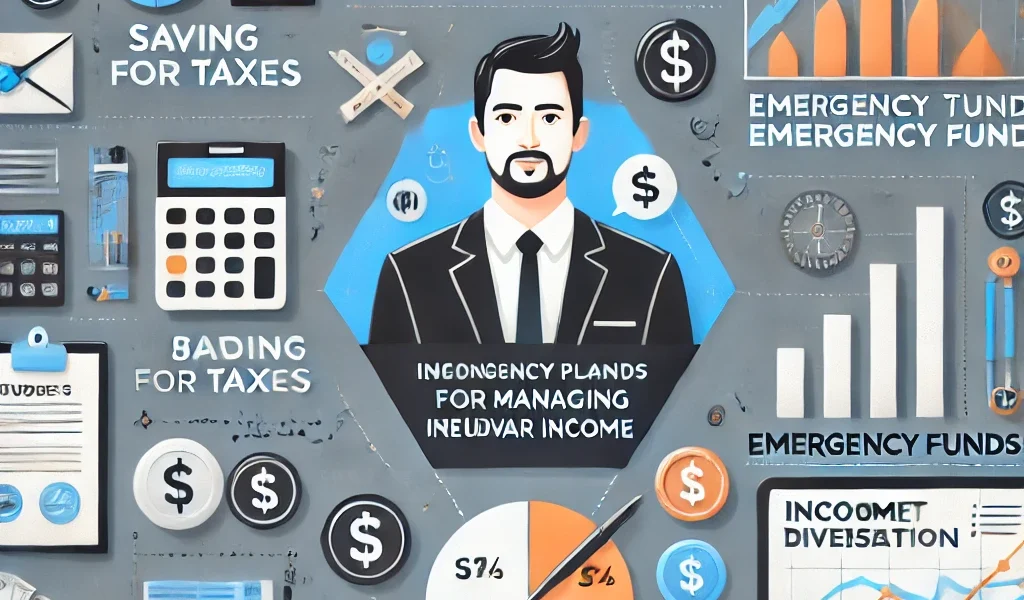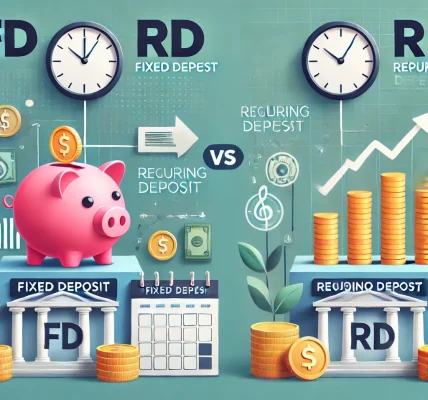Introduction
Freelancing offers flexibility, creative freedom, and unlimited income potential. However, managing finances with irregular income can be challenging. Without a steady paycheck, freelancers must adopt proactive financial planning strategies to maintain stability and achieve long-term financial goals.
In this guide, we will explore effective financial planning strategies tailored for freelancers to help manage unpredictable cash flow and secure a stable financial future.
Step 1: Establish a Budget for Irregular Income
Unlike salaried employees, freelancers often experience income fluctuations. A well-structured budget ensures financial discipline and prevents overspending.
Budgeting Strategies for Freelancers:
- Estimate Monthly Expenses: Identify fixed (rent, utilities) and variable (groceries, entertainment) expenses.
- Determine an Average Income: Calculate an average of your last 6-12 months’ earnings to establish a reliable baseline.
- Follow the 50/30/20 Rule:
- 50% for essentials (rent, utilities, food, insurance)
- 30% for discretionary spending (entertainment, travel, hobbies)
- 20% for savings and debt repayment
- Use a Zero-Based Budget: Assign every dollar of income to an expense, savings, or investment to maximize financial efficiency.
Step 2: Build an Emergency Fund
A financial safety net is crucial for freelancers facing inconsistent income. An emergency fund prevents reliance on credit cards or loans during slow months.
How Much to Save:
- Aim for 3 to 6 months’ worth of living expenses.
- Keep the fund in a high-yield savings account for accessibility and interest growth.
- Set up automatic transfers from income to your emergency fund.
Step 3: Separate Business and Personal Finances
Freelancers should distinguish between personal and business finances for accurate tax calculations and expense tracking.
Key Steps:
- Open a separate business bank account to manage freelance earnings.
- Use a dedicated business credit card for expenses.
- Track all business-related expenses to maximize tax deductions.
- Utilize financial management tools like QuickBooks, FreshBooks, or Wave.
Step 4: Plan for Taxes in Advance
Freelancers are responsible for their own taxes, including self-employment tax.
Smart Tax Strategies:
- Set aside 25-30% of income for taxes.
- Pay quarterly estimated taxes to avoid penalties.
- Take advantage of deductions (home office, equipment, travel, internet, health insurance).
- Consult a tax professional for optimized tax planning.
Step 5: Diversify Income Streams
Diversifying income reduces dependency on a single source and provides financial security.
Ways to Diversify:
- Offer additional services related to your field.
- Create digital products (e-books, courses, templates).
- Invest in stocks, bonds, or mutual funds.
- Monetize a blog, YouTube channel, or podcast.
Step 6: Invest in Retirement
Unlike traditional employees, freelancers don’t have employer-sponsored retirement plans, making independent retirement planning essential.
Retirement Accounts for Freelancers:
- Solo 401(k) – Ideal for high earners, allowing contributions as both employer and employee.
- SEP IRA – Simplified retirement savings for self-employed individuals.
- Roth IRA – Tax-free growth and withdrawals in retirement.
- Automate Contributions – Schedule monthly transfers to retirement accounts.
Step 7: Get Proper Insurance Coverage
Freelancers must ensure financial protection through insurance policies.
Essential Insurance Types:
- Health Insurance – Prevents medical expenses from draining savings.
- Disability Insurance – Provides income protection in case of illness or injury.
- Professional Liability Insurance – Covers legal costs for work-related disputes.
- Life Insurance – Protects dependents in case of unforeseen circumstances.
Step 8: Reduce Debt and Manage Loans Wisely
Debt can be overwhelming with fluctuating income, so freelancers must manage liabilities carefully.
Debt Reduction Strategies:
- Prioritize high-interest debt first (credit cards, personal loans).
- Use the Avalanche Method (paying off highest interest rate debts first) or Snowball Method (paying off smallest debts first for motivation).
- Avoid accumulating unnecessary debt and limit credit card usage.
Step 9: Leverage Financial Planning Tools
Using digital tools can streamline financial tracking and management.
Best Apps for Freelancers:
- Mint – Tracks spending and budgeting.
- You Need a Budget (YNAB) – Helps with proactive budgeting.
- QuickBooks Self-Employed – Manages invoices, expenses, and tax deductions.
- Personal Capital – Assists with investment tracking.
Step 10: Regularly Review and Adjust Financial Plan
Financial planning is a continuous process. Freelancers should assess and modify their financial strategies based on income trends and goals.
How to Stay on Track:
- Conduct monthly income reviews and adjust budgets accordingly.
- Revise savings goals annually based on lifestyle changes.
- Reinvest profits into skill development, tools, or business expansion.
- Seek advice from a financial planner for long-term financial security.
Conclusion
Freelancing provides immense freedom but requires disciplined financial planning to navigate unpredictable income. By budgeting wisely, saving for emergencies, diversifying income, investing in retirement, and managing taxes effectively, freelancers can achieve financial stability and long-term wealth.
Start implementing these strategies today to take control of your finances and build a secure future!




